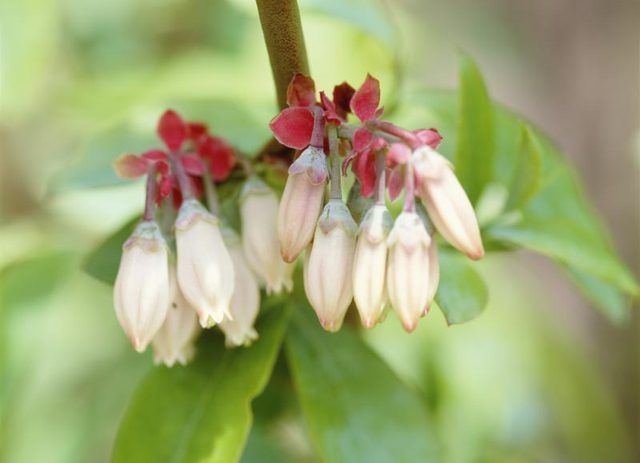Bulbs
Flower Basics
Flower Beds & Specialty Gardens
Flower Garden
Garden Furniture
Garden Gnomes
Garden Seeds
Garden Sheds
Garden Statues
Garden Tools & Supplies
Gardening Basics
Green & Organic
Groundcovers & Vines
Growing Annuals
Growing Basil
Growing Beans
Growing Berries
Growing Blueberries
Growing Cactus
Growing Corn
Growing Cotton
Growing Edibles
Growing Flowers
Growing Garlic
Growing Grapes
Growing Grass
Growing Herbs
Growing Jasmine
Growing Mint
Growing Mushrooms
Orchids
Growing Peanuts
Growing Perennials
Growing Plants
Growing Rosemary
Growing Roses
Growing Strawberries
Growing Sunflowers
Growing Thyme
Growing Tomatoes
Growing Tulips
Growing Vegetables
Herb Basics
Herb Garden
Indoor Growing
Landscaping Basics
Landscaping Patios
Landscaping Plants
Landscaping Shrubs
Landscaping Trees
Landscaping Walks & Pathways
Lawn Basics
Lawn Maintenance
Lawn Mowers
Lawn Ornaments
Lawn Planting
Lawn Tools
Outdoor Growing
Overall Landscape Planning
Pests, Weeds & Problems
Plant Basics
Rock Garden
Rose Garden
Shrubs
Soil
Specialty Gardens
Trees
Vegetable Garden
Yard Maintenance
Blueberry Planting in Louisiana
Blueberry Planting in Louisiana. Louisiana may not sound like blueberry (Vaccinium spp.) country to northern gardeners, but the state's berry lovers understand their backyards deliver delicious southern blueberries. Success with blueberries in the Pelican State involves understanding blueberry needs and the state's distinct climate and soil....

Louisiana may not sound like blueberry (Vaccinium spp.) country to northern gardeners, but the state's berry lovers understand their backyards deliver delicious southern blueberries. Success with blueberries in the Pelican State involves understanding blueberry needs and the state's distinct climate and soil. Louisiana gardeners who make the right match reap intensely flavorful blueberries of their own.
Growing the Right Blueberries
All blueberries need cold temperatures to properly set fruit. Amounts needed depend on the berry. As a group, blueberries flourish from U.S. Department of Agriculture plant hardiness zones 3 through 11, but individual needs vary significantly.
Louisiana spans USDA zones 8 through 9, with a tip in USDA zone 10a, so blueberries face moderate winters and hot, humid summers. Rabbiteye blueberries (Vaccinium ashei, USDA zone 7 through 9), Southeast natives, are the perfect fit.
Blueberries produce best with full, direct sun and excellent drainage. Rabbiteyes need more than one variety for pollination, so always plant more than one. Plants that bear fruit at the same time may bloom at different times; select plants with overlapping bloom times to ensure cross-pollination occurs.
Preparing Louisiana Soil
Acidic soil helps blueberries absorb necessary nutrients. Ideal soil pH is near 4.0 to 5.3 -- lower than average Louisiana gardens. Test your soil for accurate readings on pH, soil type and organic matter, and follow test recommendations for blueberries.
Louisiana gardeners often lower soil pH with wettable sulfur. For 100 square feet of sandy soil, 0.8 pounds of wettable sulfur lowers soil pH by 1.0 unit. In clay soils, the same change takes more than three times that amount. Wear protective clothing, including safety goggles and gloves, and mix sulfur into soil 6 to 8 inches deep up to six months before planting. The earlier you amend, the more time sulfur has to work. Do this well before planting, whenever possible.
Blueberries also prefer high organic matter, which Louisiana soil typically lacks. Layer 3 to 4 inches of premoistened peat moss over your planting area, and work it in to the same depth.
Planting Your Rabbiteyes
Prime planting time for Louisiana blueberries is fall and winter. Wait until summer heat has fully passed, then plant at any time. The longer roots have to become established, the more resilient they'll be when summer hits. Prepare planting holes while plants stay moist and protected in their containers.
Dig each hole two to three times the container width and slightly more shallow than the container's depth. Blueberries' shallow roots require plentiful oxygen, so this allows for settling. Do not add fertilizer; blueberry roots are very fertilizer-sensitive. Space plants at 6-foot intervals. For hedges, plant blueberries 4 feet apart.
Remove the plant from its pot, gently loosen roots by hand, and place the plant in its hole. Fill the hole about one-half full with soil, then fill with water and let it settle. Fill in remaining soil, and water again. Add 1 to 3 inches of mulch around each plant's base, keeping mulch 2 to 3 inches away from stems.
Caring for New Blueberries
Prune newly planted blueberries by about one-third, and remove any low, twiglike growth. This focuses plant energy on root production. Use sharp bypass pruners, and sterilize the blades with household disinfectant before and after you prune.
Keep soil evenly moist -- never waterlogged -- as roots become established.
When new spring growth appears, fertilize each plant with 2 ounces of 4-8-8 fertilizer, or a similar ratio, labeled for acid-loving plants. Spread fertilizer in the 18-inch area around each blueberry plant. Always water the plant thoroughly before and after fertilizing. Repeat the process in May and again in July.
Remove all flower buds that appear the first year, so your blueberry plants stay focused. They'll reward your patience with productivity in future years.